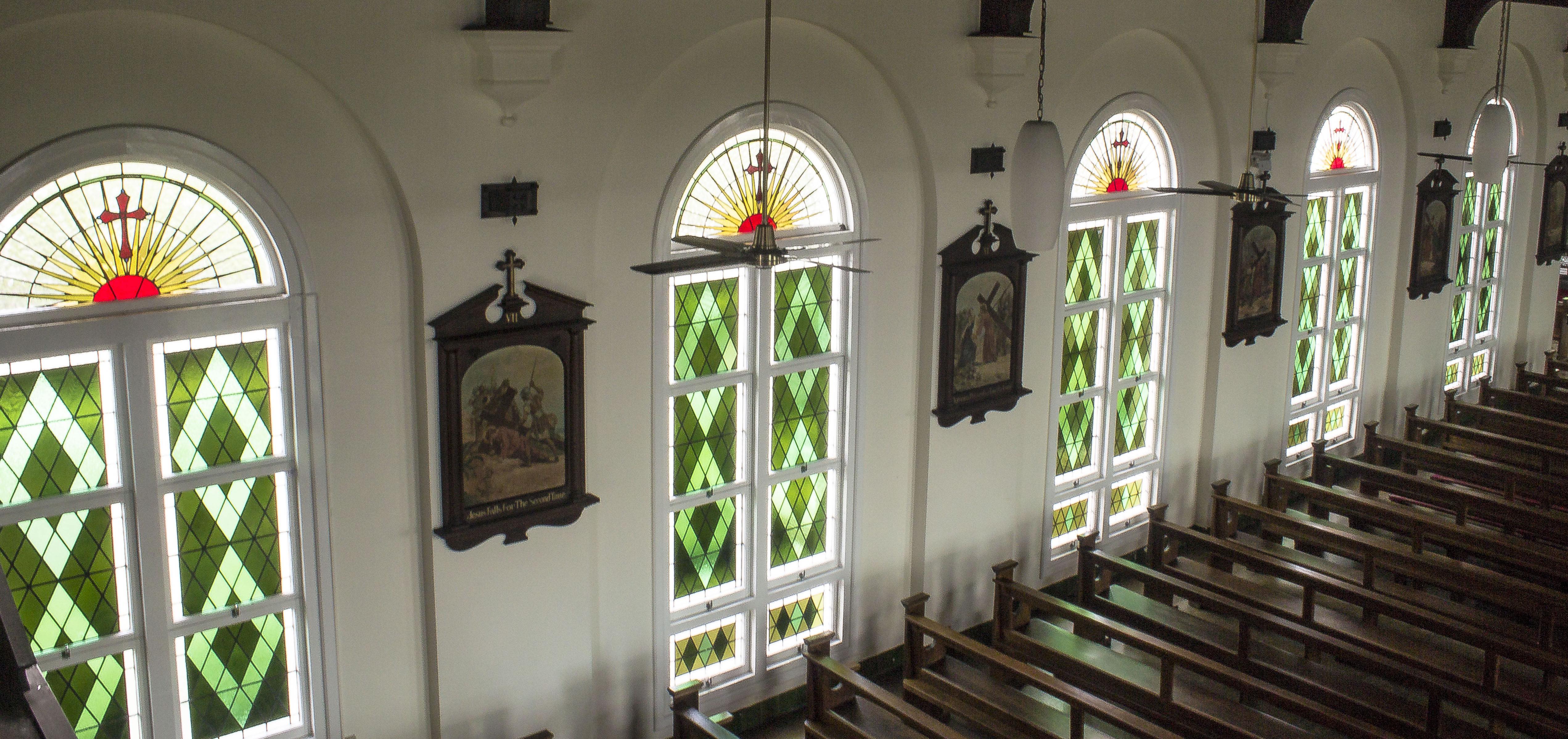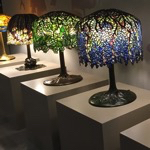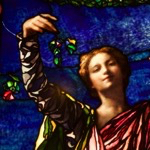We have now finished the restoration of the leadlight windows at Our Lady of Victories in Bowen Hills, Queensland. The heritage-listed church was hit by the violent thunderstorm that devastated many Brisbane suburbs in November 2014. The image below show some of the damages done to the church’s window as we photographed in our original survey.

Broken windows at Our Lady of Victories, Bowen Hills (QLD)

Damaged leadlight panel, Our Lady of Victories, Bowen Hills (QLD).

Damaged semicircle leadlight (fanlight), Our Lady of Victories, Bowen Hills (QLD).
The restoration involved repairing more than 80 windows. Of these, most were removed from their original timber casements for reconstruction, while attempting to salvage as much original glass as possible, and match the new glass with the original one. Those with minor damage and no structural concern to the lead were repaired on-site.
The matching was not easy: the windows were originally crafted by the RS Exton Studios, a painters and decorators trade who used to have their warehouse in Brisbane CBD and closed their stained glass business in 1958. The windows of the church date back probably to 1924. The original glass is not produced anymore, and the production processes and colours have since then changed. We managed to recoup some old glass through some stock we had acquired from older stained glass businesses and some demolition yards. However, for a large quantity of glass, we had to commission a custom manufacturing to some glass companies in the US to be able to match the original glass as close as possible. David from Hartley and Williams was of great help in coordinating the sourcing of this glass.

Rebuilding one of the main leadlight panels

On the way to remove leadlights from the tower.
The main damages were concentrated on the south side of the church; however a number of windows throughout the floors of the church’s tower were also damaged; their restoration involved the use of a crane to remove the windows, replace them with temporary perspex (transparent acrylic sheets), and after few weeks replace the restored windows in place.

On-site reparations at Our Ladies of Victories.

When we remove the panels, we place temporary perspex to keep the weather out and the sunlight in.

An example of a poor reparation, carried out in the past, using silicone and cardboard to fill the gap left from a broken glass.
Through the restoration process it became evident that the windows had undergone several reparations in the past, not all carried up to the highest standard. Some glass was replaced with glass that was of completely different tonalities when compared with the original glass, compromising the original history of the windows. Other glass was installed using glues or silicones: this practice is not just an eyesore, but it also puts under serious risks the integrity of the lead that gives the structure to the windows.

Previous repairs have not put much attention in maintaining the original characteristics of the windows: here you can see a clear colour miss-match for one of the diamond shaped glass from a panel in the church’s tower.

Another patchwork of colours due to previous poor quality repairs. It is always difficult to match colours that are not produced anymore, but the differences in colours of the glass used for previous reparations is way too big.

Damaged semicircle from Our Ladies of Victories in Bowen Hills (QLD).

One of the restored large semicircle leadlight (fanlight).
The damaged windows are now all restored to their original appearance. The larger windows are composed from two strips of four top-hinged hoppers, mostly filled with green diamond mullioned glass. The green colour of the windows is to commemorate the armed forces of World War I. Above these panels is placed a semi circular window glazed with a leadlight panel depicting a rising sun, which, continuing with the commemoration of the WWI armed forces, recalls the symbol of the First Australian Imperial Force AIF.

Some of the restored leadlight windows at Our Lady of Victories, Bowen Hills (QLD).

Our Lady of Victories, in Bowen Hills (QLD).

The church’s cross, which was also damaged in the 2014 hail storm, is now back on the top of the tower.




